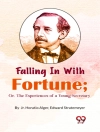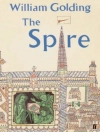In 'The Ancestral Footstep, ’ Nathaniel Hawthorne presents a compelling exploration of ancestry, identity, and the weight of familial legacy. This fragmentary work is emblematic of Hawthorne’s characteristic literary style, marked by rich symbolism and a deep psychological insight that captures the tension between personal desire and inherited obligation. The piece’s exploration of the past resonates within the context of 19th-century American literature, where themes of guilt and moral complexity were often intertwined with the American experience, reflecting the author’s own preoccupations with Puritan morality and the human condition. Hawthorne, a descendant of one of the judges at the Salem witch trials, was profoundly influenced by the shadows of his ancestors. This dark and inquisitive heritage informed his writing, pushing him to grapple with questions of morality, sin, and redemption. His keen interest in exploring the human psyche, alongside his awareness of the historical burdens people carry, embodies the thoughts behind 'The Ancestral Footstep, ’ revealing his struggle with his lineage and how it shaped his own identity. For readers seeking an engaging combination of philosophical inquiry and narrative depth, 'The Ancestral Footstep’ serves as an evocative entry point into Hawthorne’s oeuvre. This fragment, though incomplete, is rich with themes that resonate with the weight of history and personal introspection, making it an essential read for anyone interested in the intersections of past and present.
O autorze
Nathaniel Hawthorne (1804–1864), was an American novelist, dark romantic, and short story writer. Born in Salem, Massachusetts, Hawthorne’s literary works are deeply tied to the Puritan legacy, especially with respect to issues of guilt, sin, and the complexity of moral choices. His most notable works include 'The Scarlet Letter’ (1850), 'The House of the Seven Gables’ (1851), and the collections 'Twice-Told Tales’ (1837) and 'Mosses from an Old Manse’ (1846). While 'The Ancestral Footstep’ remains an unfinished fragment, it exemplifies Hawthorne’s exploration of themes such as ancestral sin and the struggle for personal identity against the backdrop of history. Hawthorne’s stylistic approach often blended the real with the allegorical, rendering his prose both approachable and profound, interwoven with symbolic and psychological dimensions. His influence extends through American literature, shaping the genre of Gothic romance and establishing a uniquely American voice within the broader Romantic movement. He was a contemporary of Transcendentalist thinkers such as Ralph Waldo Emerson and Henry David Thoreau but maintained a critical distance from their more optimistic perspectives on human nature. Hawthorne’s nuanced portrayal of the human conscience and the Puritan ethos has remained an enduring aspect of his literary legacy.












